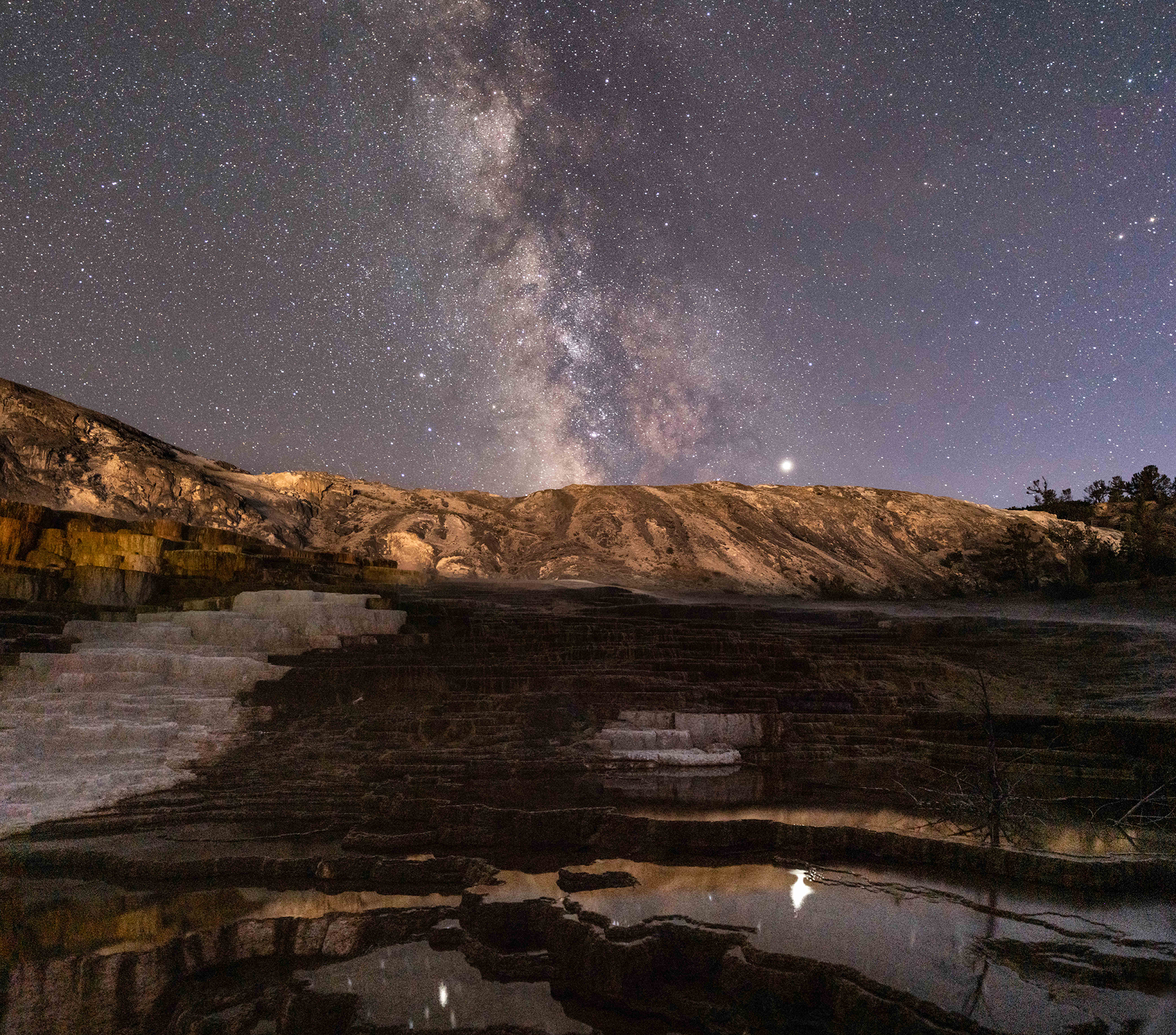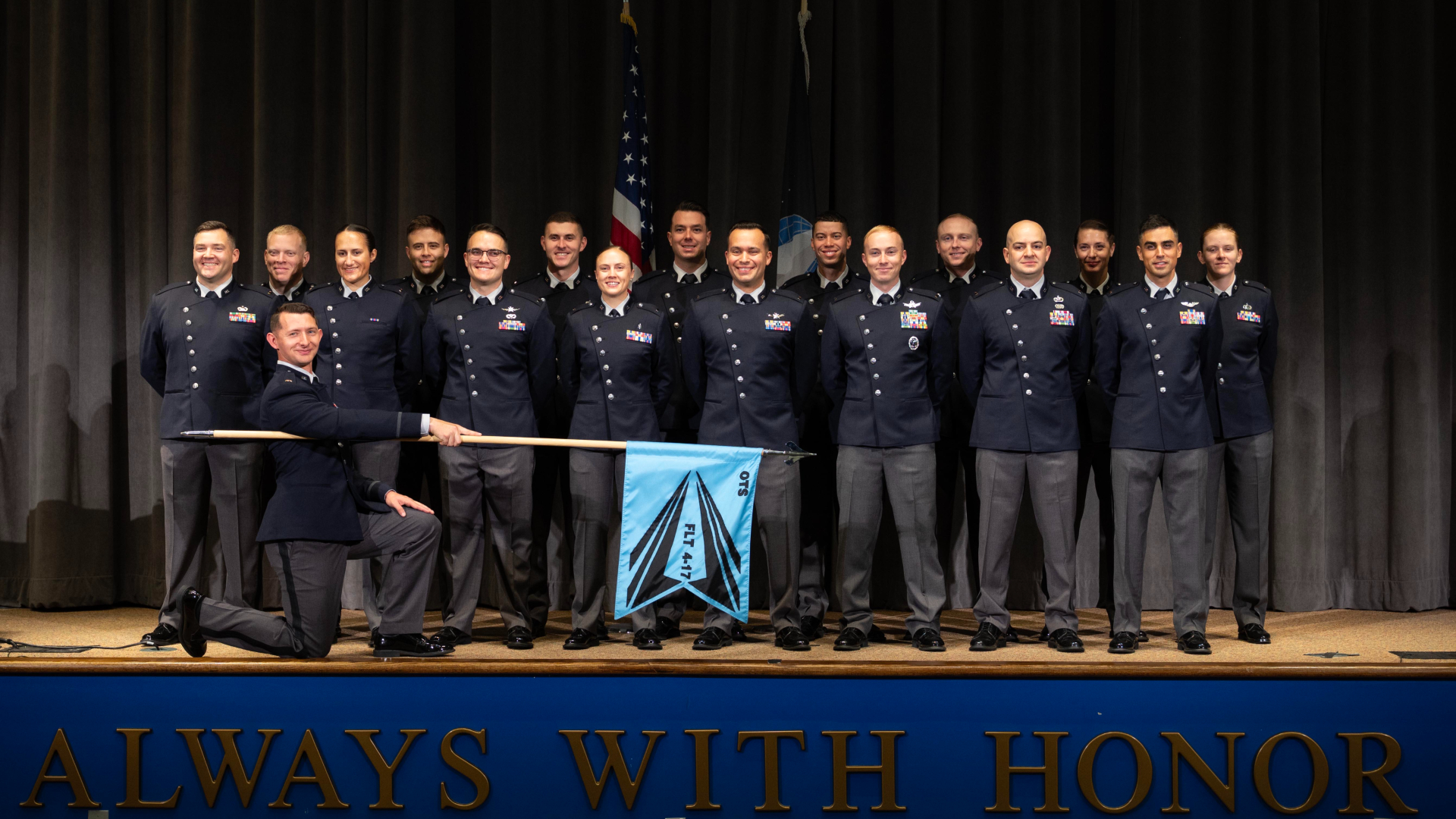
For those with a knowledge of the night sky, there's a chance to share that knowledge and appreciation of the heavens with other people by giving a star talk. I have done this on numerous occasions. From campsites and beaches to mountain summits and ships far out to sea, the general public has always been captivated by what's "up there." And if you're an amateur skywatcher, you too might want to try your hand at sharing your knowledge with others.
So exactly how do you go about giving a star talk? One of the most useful approaches, which also applies to live planetarium presentations, was stated by one of my astronomy mentors, Fred C. Hess, a long-time associate astronomer at New York's Hayden Planetarium. He stressed that a speaker "must never lecture an audience; instead, they should try to tell a story. The best storytellers make the best teachers! If you can tell a good story, you'll be able to hold the attention of the group you're speaking to."
Another excellent piece of advice was passed on to me by George Lovi, who for many years wrote the "Rambling through the Skies" column in Sky & Telescope magazine: "Talk in a manner as you would to two or three friends at a luncheon table, sharing with them your own excitement of appreciation and discovery."
The night sky is rich with a number of different sky objects that can be described understandably to neophytes to increase their cosmic awareness.
Related: The brightest planets in the night sky — how to see them (and when)
Celestial deception
Looking high in the evening sky these balmy nights, you can point out that all the stars we see are distant suns; of these, virtually all that are visible with our unaided eyes are larger, brighter and more massive than our own sun — in some cases, tremendously so, as is the case of Deneb, currently positioned high in the eastern sky. Deneb marks one corner of the famous Summer Triangle, a star pattern that is not a constellation but is actually composed of the three brightest stars of three separate constellations. The brightest of the three is bluish Vega in the constellation Lyra, which shines almost directly overhead. Farther to the south is yellow-white Altair, in Aquila. Deneb marks the tail feathers of Cygnus.
At first glance Vega appears to be the most dazzling of the three, registering more than three times brighter than Deneb. Yet looks can be deceiving: Deneb is approximately 200,000 times brighter than the sun and is so far away that its light takes about 2,600 years to reach us. Vega, in contrast, is only 1/5,000 as luminous as Deneb and appears to be so brilliant in the sky because it's about 100 times closer to us than Deneb is.
Breaking space news, the latest updates on rocket launches, skywatching events and more!
And when you talk about this, don't fail to point out that the unit of distance is the light-year, and emphasize that it represents distance, not time.
Stellar statistics, such as distances, never fail to intrigue. When you cite the fact that light from the sun takes just eight minutes — traveling at 11 million miles (18 million kilometers) per minute — to reach us, cosmic mega-distances become more than just a bunch of zeros, they come to life! And yet, the stars that compose the pictures in the sky we call the constellations are merely next-door neighbors compared to the billions of others comprising our home galaxy.
Unnatural cloud ... it's the Milky Way
If you are blessed with a truly dark-sky site, the splendid Milky Way will arch across the sky from the northeast to the southwest, being particularly prominent toward the south. Explain to your audience that this ghostly band of light is the result of looking at the combined light of the bulk of the stars that belong to our galaxy. Point out that every star our eyes can see is part of our stellar system — our home in the universe. But because we're embedded in it, when we look toward the Milky Way, we are looking along the plane of the flattened galactic system of which we are a part. And were it not for the great amounts of interstellar dust and gas obscuring our view of more distant stars, this band would appear even brighter, particularly in the area around the constellation of Sagittarius, which lies in the direction of the Milky Way's center.
This, incidentally, recalls an incident that occurred during the predawn hours of Jan. 17, 1994, when an earthquake with a magnitude of 6.7 struck Los Angeles' densely populated San Fernando Valley. With its epicenter located about 20 miles (32 km) west-northwest of downtown Los Angeles, the Northridge earthquake was the third major earthquake to occur in California in 23 years. Occurring at 4:31 a.m. Pacific Time, the powerful temblor knocked out power and caused people to rush from their homes and out into the darkened streets. Looking skyward, many saw a "giant silvery cloud" arching above the Los Angeles metropolitan area, causing a flood of phone calls to the Griffith Observatory from people who were apparently freaked out at a look of a night sky spangled with innumerable stars, along with their first-ever view of the Milky Way in all its unpolluted splendor.
The incident is a sad commentary, perhaps, on one way in which "progress" is hampering our appreciation of the night sky.
Storybook in the sky
In describing the current sky, it is always effective to introduce leading constellations and star patterns, such as the Summer Triangle, as useful celestial landmarks. Here you can delve into some very rich and ancient mythological stories.
For instance, located just to the west (right) of Sagittarius is the constellation Scorpius, easily the most magnificent of the zodiacal constellations, yet the animal it represents is a creepy-crawly; a creature that is rather small and unimpressive. The scorpion is a member of the taxonomic category Arthropoda ("jointed legs"), which is by far the largest subdivision of the animal kingdom. The splendid pattern of stars making up this celestial scorpion does indeed suggest the curved stinger of the feared arachnid, which in mythology was responsible for the death of Orion the Mighty Hunter. Appropriately, these two constellations have been placed in opposite parts of the sky, and from northern latitudes they can never be seen at the same time.
Tell your audience that, while constellation study is not part of the science of astronomy as such — contrary to popular belief — the patterns still constitute a convenient way for even professionals to refer to sky areas. Also, as far as astronomy today is concerned, constellations are recognized as nothing more than arbitrary divisions in the sky, similar to how counties and states divide up terrestrial landmasses.
Don't forget the moon and planets
Of course, the moon will garner considerable interest should you be using a telescope, though be aware you should schedule your night sky session around its best viewing periods, which comes from around the time of first quarter ("half phase") to about three or four days beyond. It is then, when examining the line that separates light and dark (called the "terminator") that lunar features are heavily shadowed and stand out in sharp relief. In contrast, a full moon appears flat and one-dimensional, and its dazzling glare will force you to squint your eyes after only a few seconds.
This time of year, we are also fortunate to have two of the very best planets for telescopic study conveniently placed for evening viewing. Saturn, the ringed wonder of the solar system, is low in the east-southeast during evening twilight but has lifted to a reasonable height above the horizon by around 9 p.m. local time. Its famous system of rings — as well as its largest satellite, Titan — are within range of any telescope with a magnifying power of 30 times or more. For those who have never had the pleasure of seeing the rings, their first view is usually accompanied by exclamations such as "No way," "Awesome," or even, "That can't be for real, is it?"
Well off to Saturn's east (left) is the much brighter Jupiter, king of the solar system. A good telescope will show its large disk crossed with dark cloud bands and accompanied by the famous Galilean satellites, named for Galileo Galilei, who made extensive observations of them with his crude telescope in 1610. Both planets will be readily accessible for evening viewing well into the fall and even early winter.
Your pointer (but be careful!)
Finally, when pointing out different sky objects, many prefer to use laser pointers. Reflecting back off of the dust and suspended particles in the atmosphere, a green laser provides an adequate pointer beam, allowing the user to trace out constellations and faint objects.
You are probably OK with a 5-milliwatt (mW) laser, as long as you do not point it toward a passing aircraft; if a laser is pointed at an aircraft and enters the cockpit, it has the potential to blind the pilots. When President Barack Obama signed the FAA Modernization and Reform Act of 2012, he made it a federal crime to shine a laser beam at or in the flight path of aircraft. Also, do not point the laser toward someone's eyes; serious problems can occur if the retina is damaged. Laser pointers can put out anywhere between 1 and 5 mW of power, which is enough to damage the retina after 10 seconds of exposure. This can lead to permanent vision loss.
Another, far safer option is to use a three-cell flashlight equipped with a krypton bulb, which can project a bright (albeit wider) beam of light up into the sky.
Joe Rao serves as an instructor and guest lecturer at New York's Hayden Planetarium. He writes about astronomy for Natural History magazine, the Farmers' Almanac and other publications. Follow us on Twitter @Spacedotcom and on Facebook.

Joe Rao is Space.com's skywatching columnist, as well as a veteran meteorologist and eclipse chaser who also serves as an instructor and guest lecturer at New York's Hayden Planetarium. He writes about astronomy for Natural History magazine, Sky & Telescope and other publications. Joe is an 8-time Emmy-nominated meteorologist who served the Putnam Valley region of New York for over 21 years. You can find him on Twitter and YouTube tracking lunar and solar eclipses, meteor showers and more. To find out Joe's latest project, visit him on Twitter.

